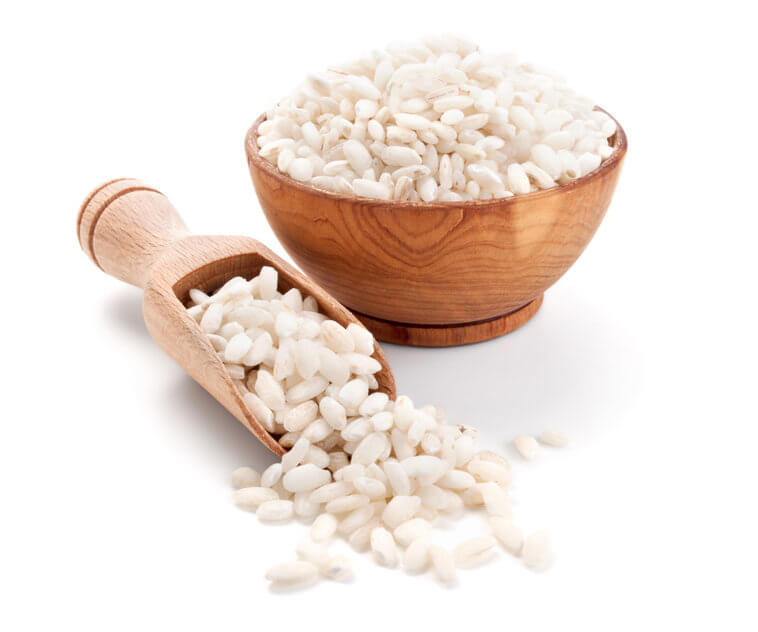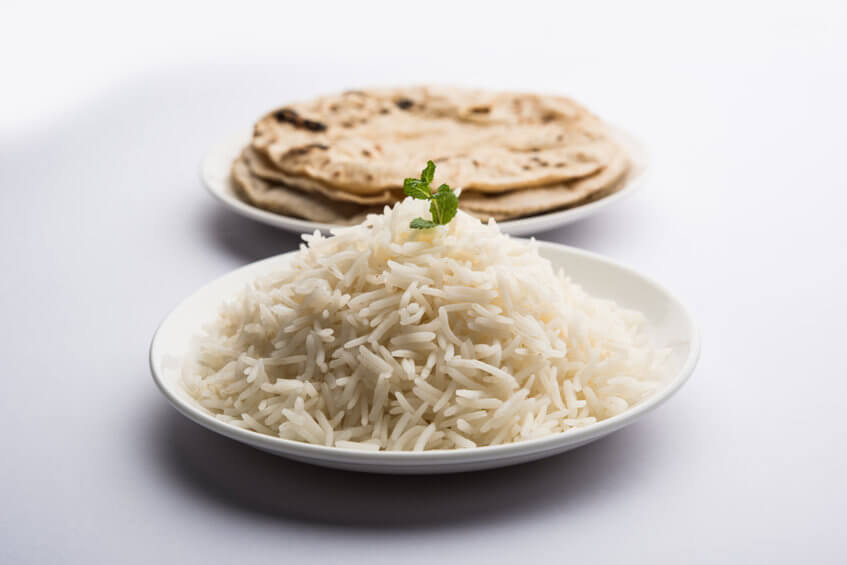Have you ever been shopping at the grocery store, stopped to pick up some rice, and seen a bunch of different types? Maybe you usually grab the brand you’re most familiar with and call it a day, but have you ever wondered if there was a right type of rice for the dish you were making? Have you ever considered that different types of rice go best with other dishes? The fact is: there is! This article will specifically compare Arborio rice vs basmati rice, their nutritional differences, and which is best for which type of cooking.
Whether you’re trying to create the perfect risotto, make a tasty pilaf, or just want to learn the difference between types of rice, we’re here to help! The numerous different rice varieties can be overwhelming to choose from; which one is suitable for your dish? What should you consider when cooking? Do you want long-grain, short-grain, or medium-grain? Do you want starchier rice? A stickier kind?
We’re going to discuss two types of rice: Arborio Rice — a short-grain, and Basmati Rice — a long-grain aromatic comparison.
We’ll discuss which variety is better suited for your risotto and why you may select one for your rice pudding and not the other. We’ll also tell you why both make great side dishes and their health benefits.
Arborio Rice

Arborio Rice is a short-grain, high-starch rice originating from Arborio, Italy, for which it gets its name. This rice is often used in risottos or rice puddings due to its creamy and chewy texture when cooked.
These ovular grains are typically a white color and about a quarter inch in length, though Arborio Rice is available for purchase in the brown, unrefined variety.
Arborio Rice can be cooked by bringing two cups of water to a boil, then adding one cup of rice. Reduce the heat to a medium-low simmer for about 20 minutes until the liquid is fully absorbed into the rice.
If you are going to use Arborio Rice for risotto, it’s best not to wash it before you use it, as you would with traditional rice. When making the risotto, you add 5 cups of water or broth, slowly, per each cup of rice, allowing the rice to absorb the liquid after each addition fully. During this gradual cooking process, the starches are released into the liquid creating a sauce-like texture. Due to its high starch content, this makes Arborio Rice the best choice for risotto.
Basmati Rice

Basmati Rice is very different from Arborio rice in that it is a long-grain, aromatic rice that is typically grown in India, Pakistan, or Nepal. Basmati Rice is most commonly used as a side dish for curries or in a pilaf.
Like Arborio Rice, it is also available in white and brown varieties, but what makes it unique is that it has a nutty flavor and a floral aroma.
The white variety of Basmati Rice is most common, and the brown type is more likely to be found in health food stores. This brown variety of Basmati Rice has higher fiber content and a more intense flavor than that of its paler counterpart. Brown Basmati Rice also requires a longer cook time than white rice.
Unlike our aforementioned Arborio-for-Risotto cooking method, you’ll want to rinse this rice until the water runs clear and drain it well to start cooking Basmati Rice. If you prefer fluffier rice, consider soaking it first to make it more tender, though this step is not required for preparation. The standard cooking ratio is 1:1 rice to water. Bring the water & rice to a boil, then reduce the heat and cover it tightly. Allow it to simmer until the water is fully absorbed into the rice and it is tender.
Arborio Rice Vs Basmati Rice
When it comes to the nutritional value of rice, there are important factors that you’ll want to consider when adding it to your meal. Rice can be an excellent source of carbohydrates, which is the main way your body stays energized throughout the day.
Let’s talk about the nutrition facts of each of Arborio rice vs Basmati rice:
Arborio rice nutrition facts (per 1 serving, 1 cup) contain:
- Calories: 242
- Total Fat: 0.3g
- Cholesterol: 0mg
- Sodium: 0mg
- Potassium: 48mg
- Total Carbs: 53g
- Dietary Fiber: N/A
- Protein: 4.4g
By comparison, Basmati rice nutrition facts (per 1 serving, 1 cup) contain:
- Calories: 205
- Total Fat: 0.4g
- Cholesterol: 0mg
- Sodium: 1.6mg
- Potassium: 55mg
- Total Carbs: 45g
- Dietary Fiber: 0.6g
- Protein: 4.3g
As evident by the nutrition facts, the primary difference between Arborio rice vs Basmati rice is that the Basmati variety has less calories, less carbohydrates, and more fiber per serving.
Because Basmati rice has a low carbohydrate count and lower calorie count, it has a very low glycemic index score. Meaning its carbs absorb into the blood more slowly, making it a healthy alternative to various other forms of rice. This helps to keep blood glucose levels more stable.
Conclusion
So, we’ve successfully pointed out the differences between Arborio rice vs Basmati rice, but the fact is that both types of rice make excellent side dishes.
Both of these types of rice are available in white or brown grains. Both types of rice have significant cultural distinctions, with Basmati Rice being perfect for Indian curries and Arborio rice creating a gorgeous Italian risotto.
If you are searching for a healthier substitute for Arborio Rice, Basmati can be a great go-to. Its lower calorie and carbohydrate count and higher fiber content make it an excellent health-conscious choice.
Basmati Rice is naturally gluten-free, meaning it doesn’t possess the same sticky, starchiness that Arborio Rice does, which makes Arborio so great for risotto. Fear not, though; you can still use Basmati Rice in a risotto if you choose but consider adding pumpkin broth to make the rice stickier.
It simply depends on the meal you’d like to feast on. Ultimately the choice is up to you: Arborio Rice vs Basmati Rice; try one of them with your next meal!

